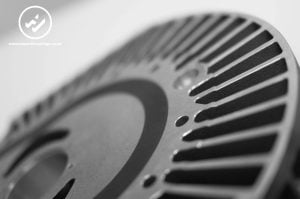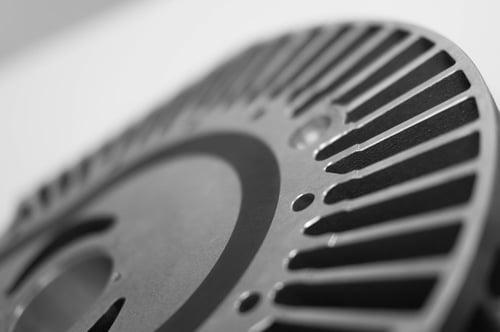Cast to Finish
Published - 29th Jul 2022
Choosing the right surface finish for your sand and gravity die casting
Sand and gravity die casting are consistent, accurate and cost-effective manufacturing processes that are used to produce critical components across a wide range of industry sectors. In order for the component to be fit for its end use, it must usually undergo specific finishing processes. In this article we look at the importance of identifying the required finish from the outset.
 What is Finishing?
What is Finishing?
Finishing is the last critical stage in the aluminium sand casting and gravity-die casting process. It is designed to:
- Give the component the desired surface texture
- Remove excess material or surface contaminants
- Enhance aesthetic qualities
- Act as a pre-treatment for other finishing processes (such as painting)
Standard finishing
All sand and gravity die casting will undergo the initial stages of finishing at Haworth Castings. These include:
- Fettling: – Excess material such as risers are removed using a band saw or manual cutting device.
- Linishing: – A grinder or belt sander is used to remove any excess material.
- Shot blasting: The casting is then blasted with stainless steel shot to remove any contaminants and create a uniform finish. Shot peening is a similar, gentler process that uses finer ball bearings to enhance the surface finish and provide greater protection against surface cracks.
The finished casting is now ready for heat treatment and any additional surface treatments depending on customer specifications.
Identifying the appropriate surface finish
It is important to specify your required finish at an early stage. Where components require extensive finishing, for example with specialised paint or moly spraying, it is important to make sure this is taken into account during the design and manufacture stage as finishes can have an impact on the tolerance as well as various properties of the component.
In our blog on Design for Manufacture we explain how Haworth Castings works closely with customers to ensure products are designed to take advantage of the most suitable production method for their end use. Involving our experts at the earliest opportunity will ensure your products are cost-effective and optimised for their applications.
Extra Finishing
Haworth Castings offers a wide range of additional finishing techniques, including:
- Paint finishes: – Painting can increase the component’s resistance to corrosion, wear and erosion and enhance its aesthetic qualities. Painting techniques include powder coating, where a powdered pigment is sprayed onto the component and fused on the surface in a curing oven; wet spray coating; nylon coating; and infrared reflective painting.
- Anodising: – Anodising uses electrolysis to produce a hard transparent oxide coating that increases corrosion resistance and protects the surface of the casting. Sulphuric acid and chromic acid anodising are the two most popular techniques.
- Polishing: – Polishing gives the casting an aesthetically-pleasing surface appearance and, in some cases, can enhance certain properties of the component.
- Molybdenum spraying: – Moly spraying increases the wear resistance of our aluminium castings. Molybdenum’s ability to withstand extreme temperatures makes it ideal for use in aerospace and defence applications.
- Finish machining: – Castings often undergo a final machining operation to ensure that critical features have the required geometrical tolerance and surface finish.
Quality finishing from Haworth Castings
Haworth Castings offers a wide range of machining and finishing techniques to ensure that the surface finish of your component is optimal for its end use. Our skilled foundry team is available to advise customers from the outset, so that your casting is delivered in the most cost-effective and efficient way.
To find out more, contact us on 01794 512685.

 What is Finishing?
What is Finishing?


